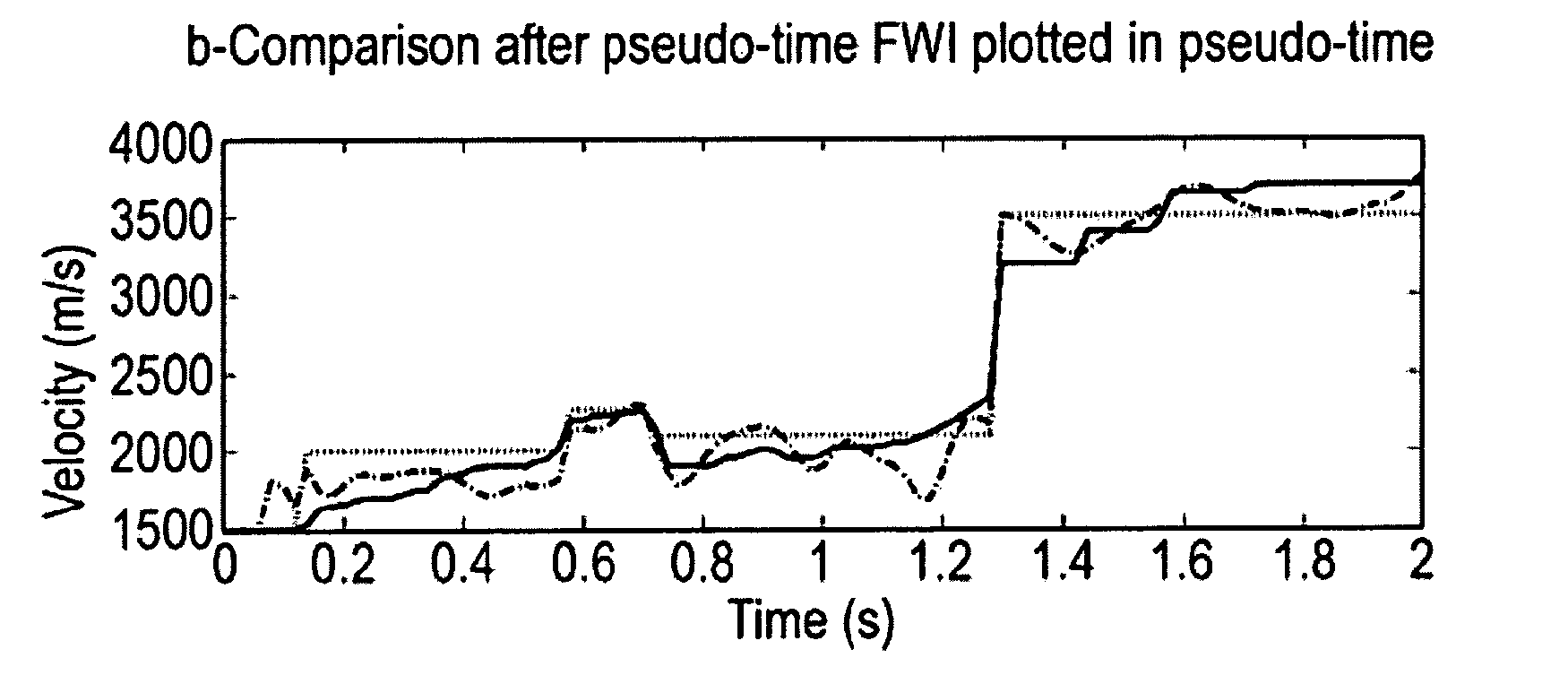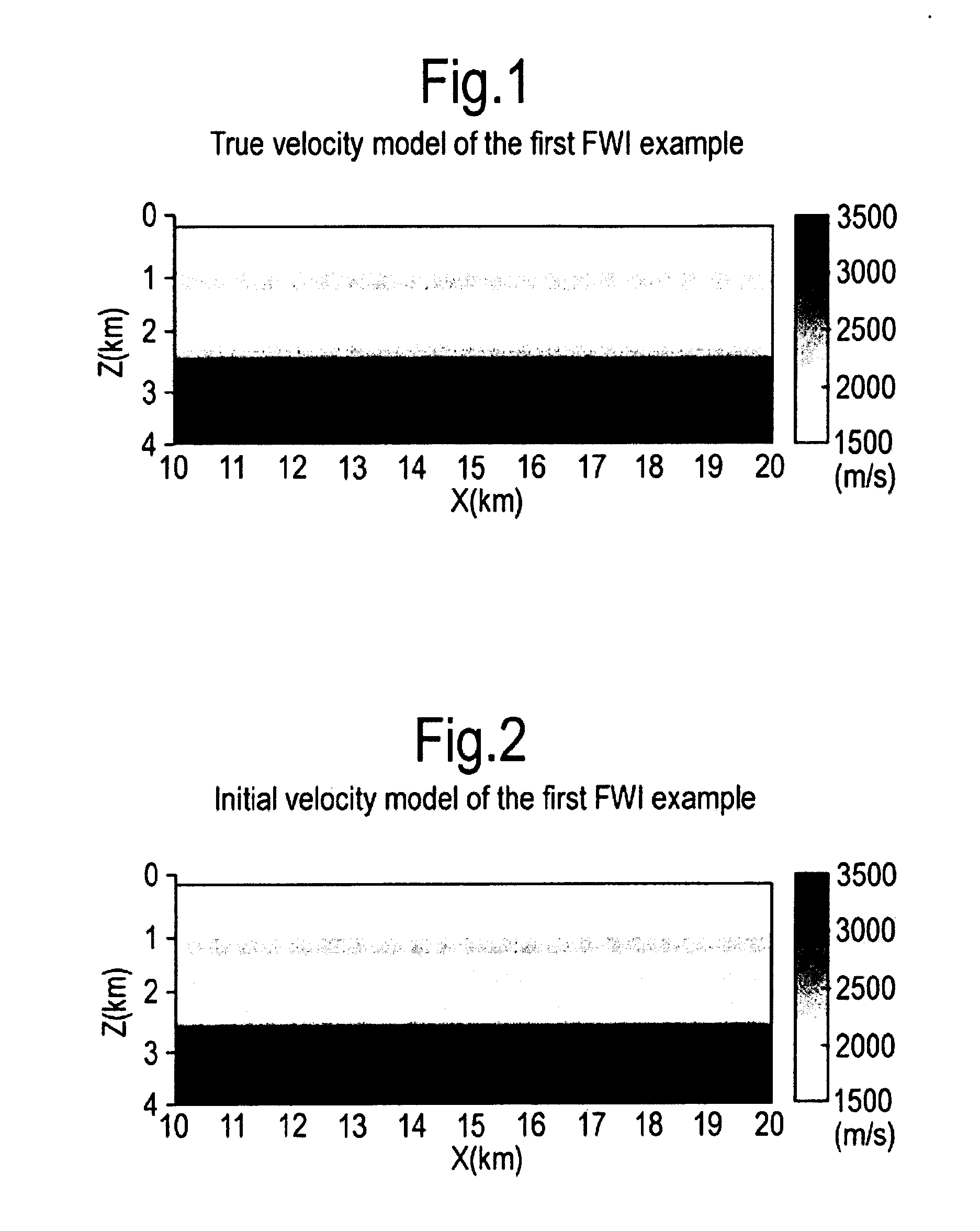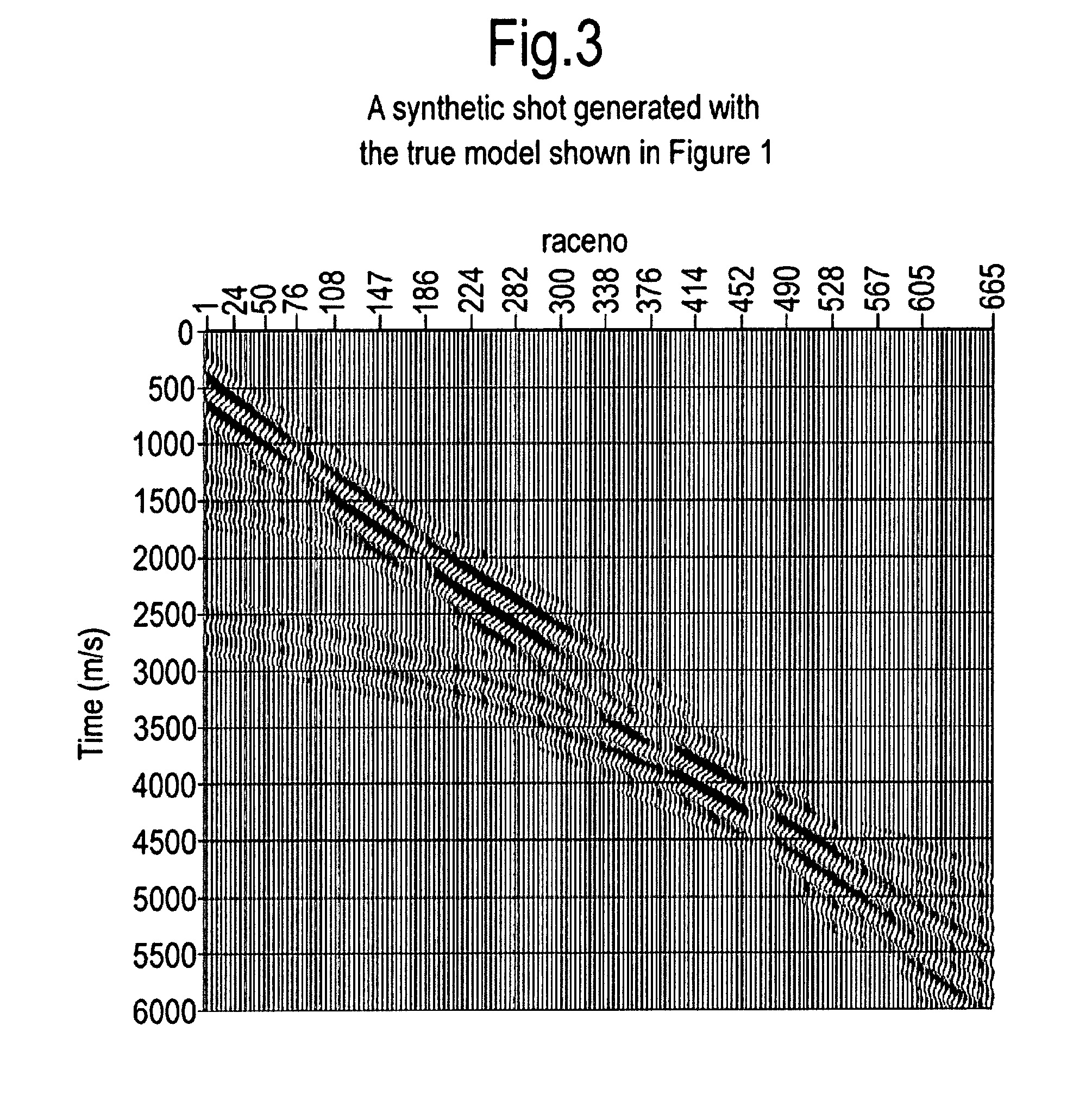Earth model estimation through an acoustic full waveform inversion of seismic data
a full waveform inversion and earth model technology, applied in the field of earth model estimation through acoustic full waveform inversion of seismic data, can solve the problems of depth/velocity ambiguity, local minima, and ambiguity between depth (z) and vertical acoustic velocity
- Summary
- Abstract
- Description
- Claims
- Application Information
AI Technical Summary
Benefits of technology
Problems solved by technology
Method used
Image
Examples
example 1
III) Example 1
[0119]To evaluate whether this approach is valid with large lateral variations, seismograms with different laterally-varying velocity models were computed and compared.
[0120]We first considered the velocity model in the pseudo-time coordinate system, FIG. 9.a, transformed it in the depth coordinate system, FIG. 9.b, and computed a reference shot gather.
[0121]Secondly, we perturbed by 20% the second layer of the velocity model FIG. 9.a, from 2000 m / s to 2400 m / s. Here, the perturbation is done in the pseudo-time model space. The velocity is displayed FIG. 10.a and FIG. 10.b after transformation in the depth coordinate system. The shot gather computed in this perturbed velocity model is plotted in black and white in the background of FIG. 11 while the reference shot gather is plotted in black wiggles. The two reflected events at about 2.8 s are in phase at short offsets, although the velocity difference in the second layer is 400 m / s. The reflected events approximately s...
example 2
IV) Example 2
[0126]Example 2 provides a simple full waveform inversion synthetic example.
[0127]In Example 1 strong discontinuities were present in the initial model. Since we work at low frequencies, we may smooth these discontinuities before starting FWI. Here, we then present a simple FWI where the interfaces have been smoothed. The true velocity is displayed FIG. 19.a. The data are generated using the same acquisition geometry that in the first example. The initial velocity model is plotted FIG. 19.b. Using a multiscale approach, the frequencies 3, 4, 5, and 6.5 Hz are inverted. The FWI results are shown FIG. 20. Depth and pseudo-time FWI give similar results. The velocity inversion is however slightly better recovered with the pseudo-time formulation; see FIG. 22. To further evaluate the results, we picked the depths where the velocity becomes larger than 3500 m / s. This more or less corresponds to the horizon at about 2.7 km depth. The picked horizons in the four velocity models...
PUM
 Login to View More
Login to View More Abstract
Description
Claims
Application Information
 Login to View More
Login to View More - R&D
- Intellectual Property
- Life Sciences
- Materials
- Tech Scout
- Unparalleled Data Quality
- Higher Quality Content
- 60% Fewer Hallucinations
Browse by: Latest US Patents, China's latest patents, Technical Efficacy Thesaurus, Application Domain, Technology Topic, Popular Technical Reports.
© 2025 PatSnap. All rights reserved.Legal|Privacy policy|Modern Slavery Act Transparency Statement|Sitemap|About US| Contact US: help@patsnap.com



